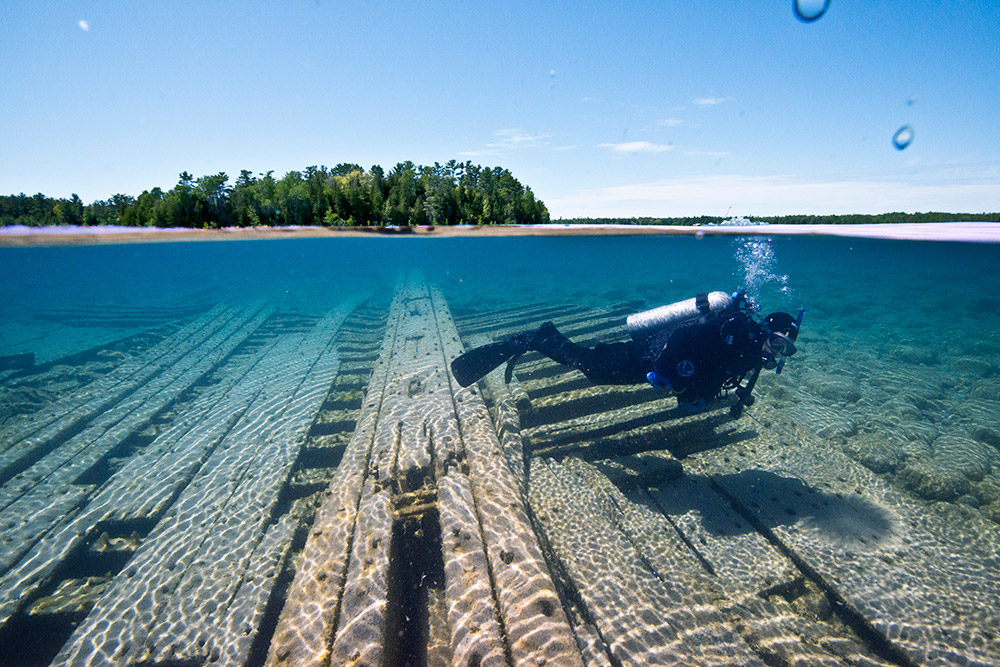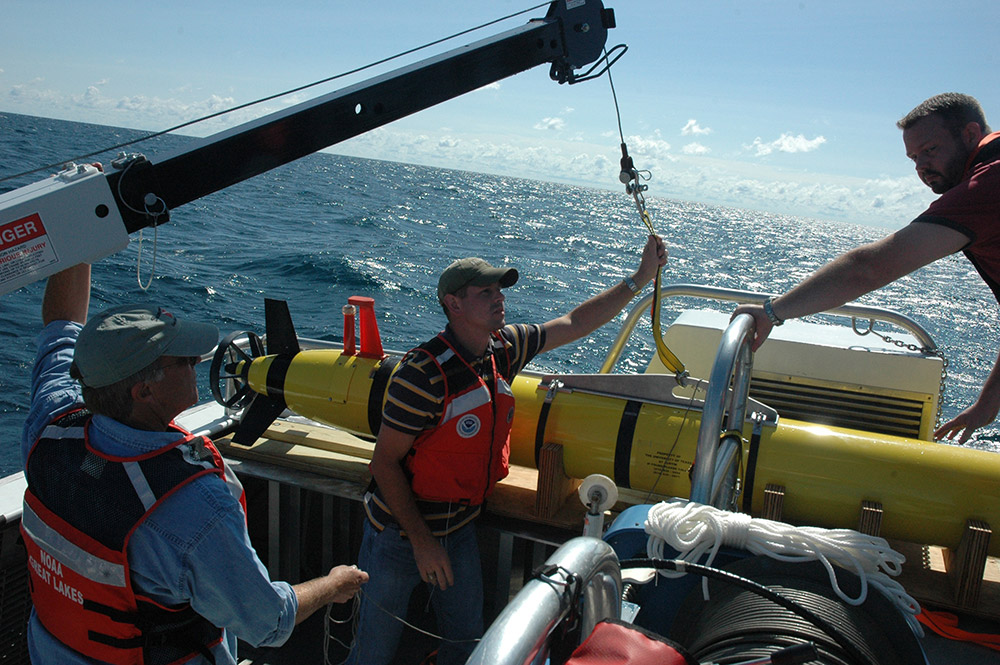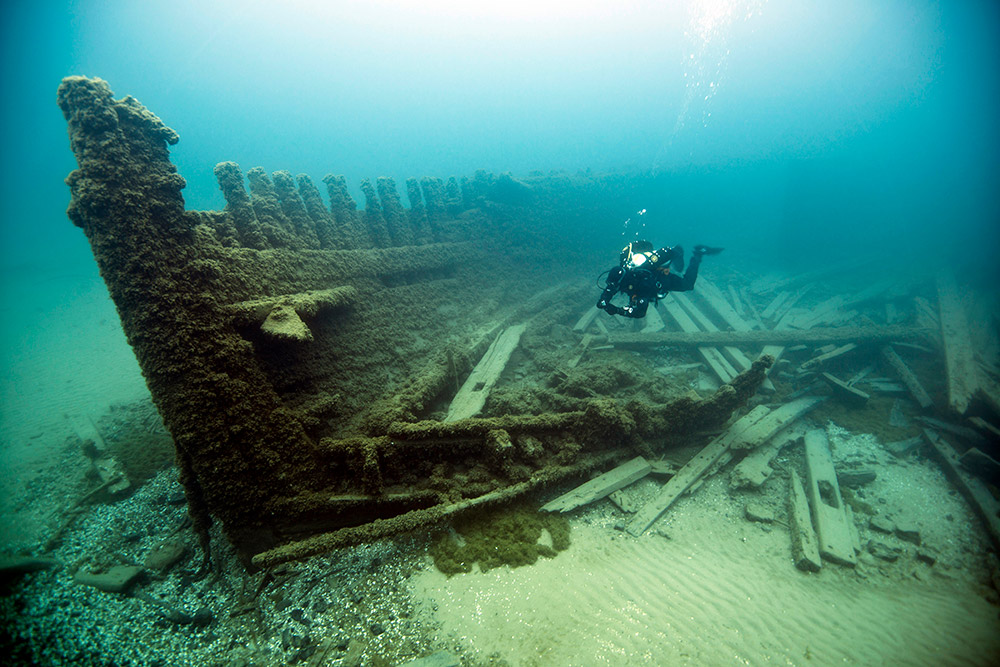History Meets Technology in Shipwreck Alley
Sarah Waters
April 2017
The vast stretches of cold, fresh water in the Great Lakes hide the stories of thousands of ships that wrecked in our nation’s inland seas. Historical records indicate more than a hundred shipwrecks have yet to be discovered in Lake Huron’s Thunder Bay National Marine Sanctuary, and research teams hope to discover more this summer.

From April through August, Thunder Bay National Marine Sanctuary will lead four different teams using advanced technologies to push the boundaries of underwater archaeological survey and seek yet-to-be-discovered shipwrecks within the sanctuary.
Cold, fresh water preserves Great Lakes shipwrecks remarkably well, and this provides an opportunity to locate these underwater time capsules and tell their stories. The continued preservation of these histories for future generations relies on accurately locating and documenting the shipwrecks.

But finding and assessing shipwreck sites is not always easy. The shallow and rocky areas of Lake Huron that trapped these ships in the past are just as difficult to navigate today, and no single tool is a catch-all solution for finding and recording information about shipwrecks. This research project will test methods of surveying shallow, nearshore water with unmanned aircraft systems (UAS), and will explore deep, offshore waters using different acoustic surveying systems, looking for the best approach to rapidly collect information.
The first phase of the project will run from April 10 through 21. Sanctuary partners NOAA Remote Sensing Division and Alpena Community College will use cameras onboard UAS to capture images of the shallow waters of North Point Reef, Middle Island, and Black River. The high-resolution photographs will be used to identify shipwreck remains, and also to produce photomosaics that may help with identification.

From May 15 through 26, the team will transition to deep-water exploration of the northern area of the sanctuary. Using a wide-sweeping sonar device from the University of Delaware, as much of the lake bottom as possible in this area will be surveyed over 10 days, in 24-hour operations onboard a research vessel from NOAA’s Great Lakes Environmental Research Lab. Expected results of this phase of work will be a number of “targets,” or non-natural items, discovered along the lake floor.
The third phase of work, from June 19 through 30, brings in another partner, Michigan Technological University. They will provide an autonomous underwater vehicle (AUV) to investigate targets identified by the sonar operations that take place in May. This AUV system provides high-resolution sonar images of the targets, aiding in identification of shipwrecks.

The final phase of work, from July 10 through 21, will deploy divers to take video footage of targeted shipwrecks identified in June. Divers from Thunder Bay National Marine Sanctuary, along with East Carolina University and Monitor National Marine Sanctuary, will capture video footage of the targets. This video footage will be used to produce 3D photogrammetric maps of the sites.
Check back after each phase of work to find out what these innovative technologies reveal from beneath Lake Huron’s waves!
Sarah Waters is the education and outreach coordinator for Thunder Bay National Marine Sanctuary.

